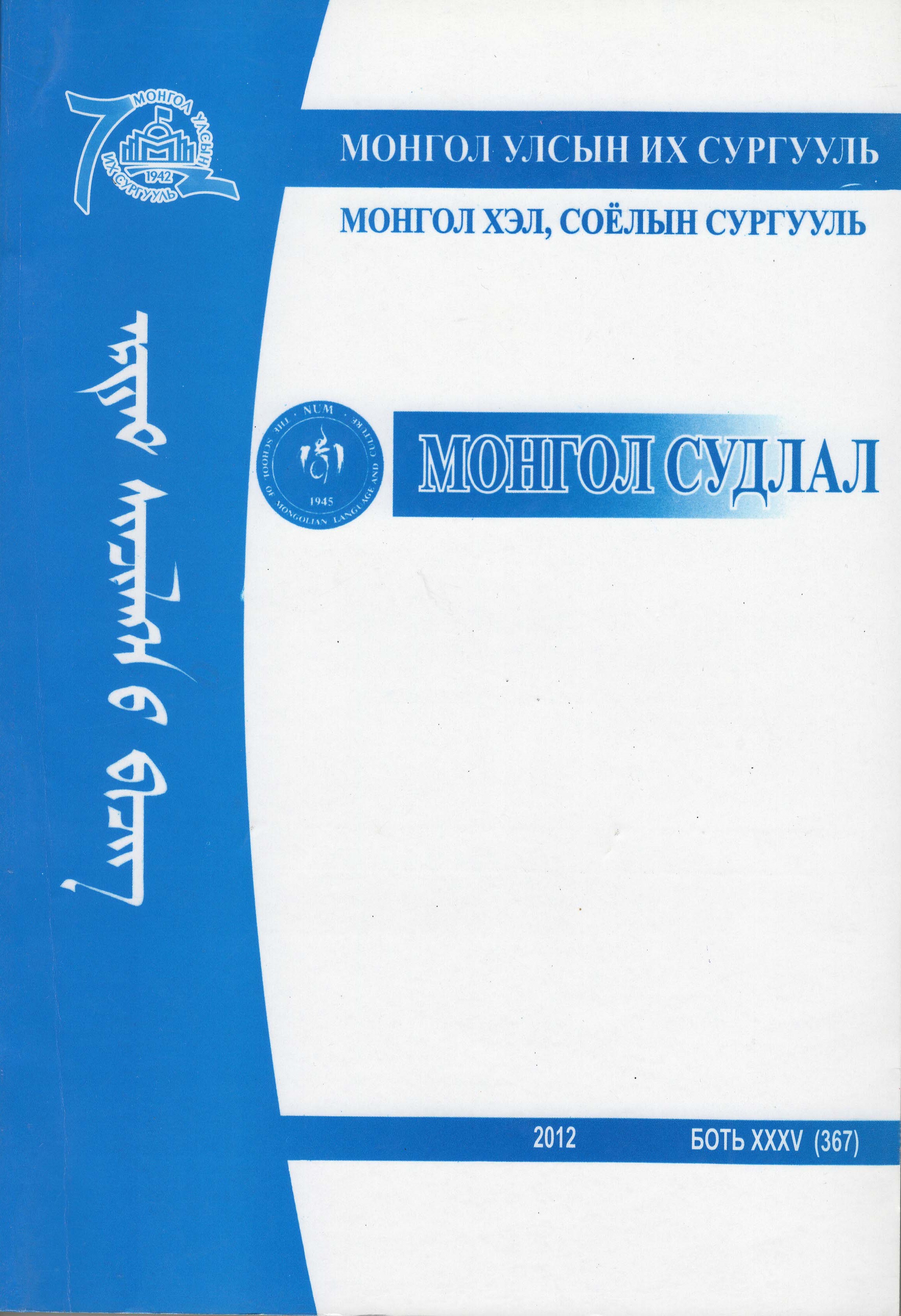Давхар гийгүүлэгч ба эртний монгол хэлний үеийн бүтцэд холбогдох нэгэн өвөрмөц хандлага
Geminate and specific trend related to the syllable structure of Ancient Mongolian
Abstract
There were only two syllable formations 'CV' and 'CVC' in Proto Mongolian. During the language development, number and structure of syllables of some words have been continuously changed. Phonetic phenomena like consonant dropping, syllable dropping, anaptyxis, consonant and vowel adding have been frequently occurred. Closed consonant before each syllable and after each non-final syllable were existed since the Ancient Mongolian language, which can be seen from the orthography of the Mongolian script. It connects to the trend that syllable covered as possibly initial and final consonants (CVC). This trend could Ьс shown by two ways.
Firstly, consonant adding before vowel.
It quite commonly occurs to the middle of a word or boundary between two morphemes. In Mongolian orthography, a word ending consonant followed by a suffix beginning with a consonant is inserted vowel. Syllables -du/-dü, -bu/-bü, -gü, -γu will be added after consonants -d, -b, -g, -γ if a suffix beginning with a consonant. For example, durad-du-mui “дурдмуй”, jib-bü-mui “живмүй”, ög-gü-müi “өгмүй”, kiruγ-γu-mui “хярмуй” etc. These are indices to the orthography of geminate in the Mongolian language. Geminates like -bb-, -gg-, -nn-, -ŋn-, -ss-, -rr-, -dd-, -11-, -yy-, -mm- between the boundary of morphemes occurred frequently in the monuments of Mongolian language written in Mongolian script, ‘Phags-pa script, Horizontal Quadratic script, Soyombo script, Chinese, Arabian, Korean, Manchu and Tibetan. Special geminate derives -dt-,-mb- in a few words.
Secondly, adding consonant after vowel.
Most forms of morphemes of Mongolian are derived from -CCV and -CCVC. Analyzing these, consonants like - γ/g, -l, -b,-d commonly precede the morpheme. For example, suffixes -da, -ta, -de,-te in the passive voice are formed as alternant -γda,-gde when go after vowel.
Double consonant /geminate/ is common in colloquial Mongolian, but this has been disappearing compared to the Ancient Mongolian. However, Mongolian geminate has never connected to the function of phonemes; it is not the static feature in the Mongolian phonetic system.
It is necessary to study the functions of initial consonants of ‘CCV’ and ‘CCVC’ structural affixes of Mongolian by the phonomorphological point of view.





